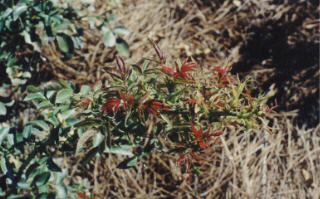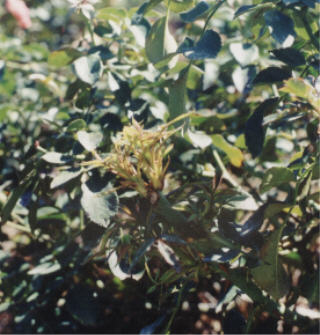"PROTECTING ORNAMENTAL ROSES
|
| Valuable ornamental roses can be severely affected and killed by RRD. Tests were conducted in Madison, Indiana, in 1989 to find miticides to control P. fructiphilis on ornamental roses. Six compounds were selected and applied to four one-plant-replicates, with four controls. The materials evaluated were amitraz, carharyl, dicofol, acephate, diazinon and avermectin. The three best materials were carbaryl, amitraz and diazinon, all showing reduction of mite populations for about 30 days; carbaryl appeared to have some slight systemic activity (Amrine, unpublished). Mite numbers in Indiana were too low to repeat the tests in 1990, and too few RRD-infected plants with mites were available in West Virginia. We recommend treatment of ornamental roses with one of the three materials every two weeks, from mid-May until September. Study plots were established at West Virginia University to evaluate protection of six classes of ornamenta~ roses (hybrid tea, florihunda, ~grandiflora, miniature, climbing arid shrub) and muitiflora rose in a split plot design with three replicates ~nd controls. The plants were treated with one of the six materials biweekly; P. fructipliilus from RRD-infected multiflora were then applied biweekly, one week after treatments. To date, four Rosa multiflora (two controls, one treated with avermectin and one treated with diazinon) became infected; none of the ornamental roses, including controls, produced symptoms of RRD." |
|

